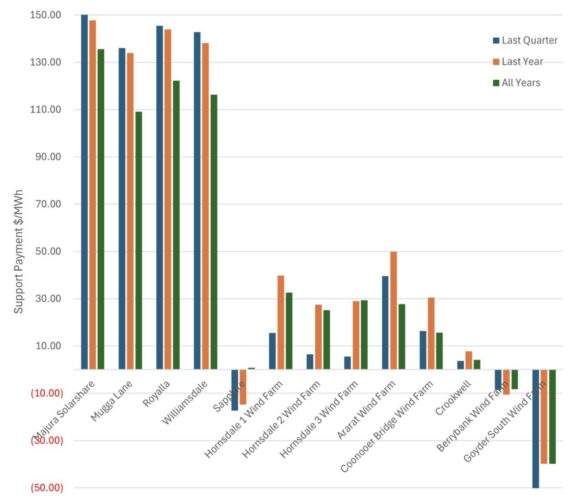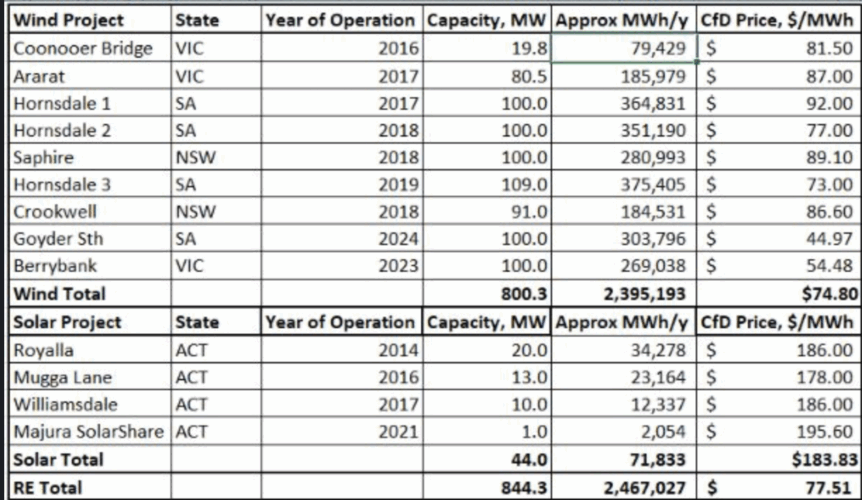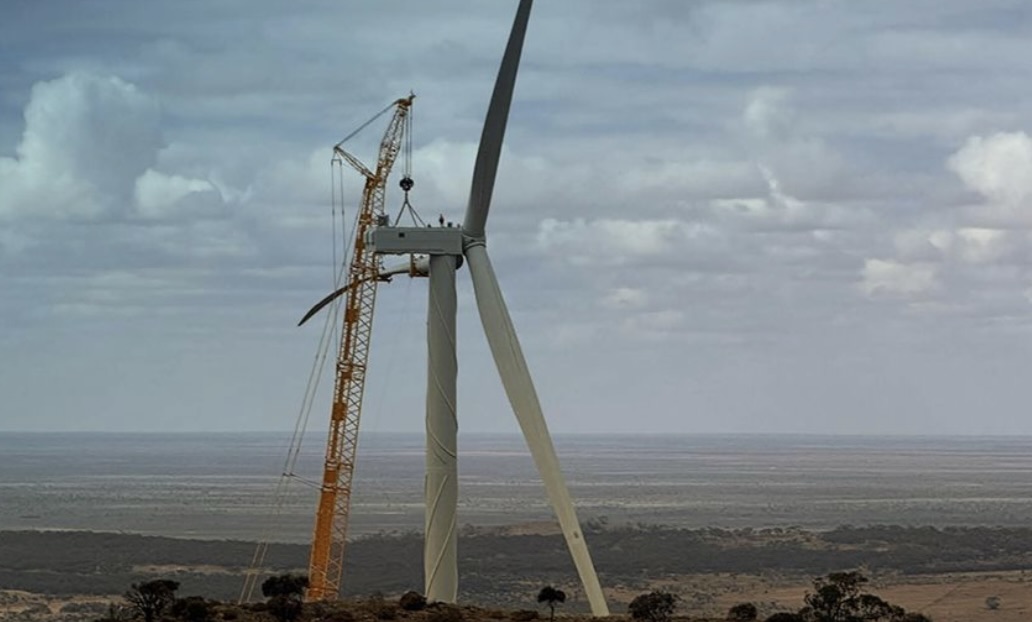The ACT government continues to reap the rewards for its early and bold push to 100 per cent renewables, which is now looking like the smartest policy of all – shielding its residents from the ravages of largely fossil-fuelled electricity price hikes.
The latest quarterly data assessing the cost of the ACT government’s commitment to sourcing the equivalent of its annual demand from wind and solar – which it met on schedule in 2020 – shows the additional cost of the policy in the latest quarter was just $3 a megawatt hour.
Indeed, three of the wind farms contracted by the ACT government returned significant sums of money (a total of $4.4 million) to the ACT because the contract prices they agreed to are significantly lower than current wholesale electricity prices.
One of those wind farms, the Goyder South project in South Australia, returned an average $50/MWh to the ACT in the June quarter. It’s an astonishing amount, and the result of a deal reached with Neoen to supply electricity from Goyde South at just $44.97/MWh – fixed for 20 years.
The Goyder South wind farm – which contracts 100 MW of its capacity to the ACT – returned $2.9 million to the ACT in the June quarter, and that is even after the relevant LGCs (large scale certificates) eligible to the wind farm were extinguished rather than cashed in.
 Source: David Osmond.
Source: David Osmond.
The Berrybank wind farm in Victoria, which has a contract priced at $54/MWh, returned $482,000 to the ACT in the June quarter, while the Sapphire wind farm in northern NSW, which has a contract priced at $89/MWh, still managed to return $1 million to the ACT in the quarter.
The ACT offered what’s known as “contracts for difference” to each of the projects. If the wholesale electricity price averages more than that contract price, the excess received by the wind farm owner is returned to the ACT. If the average wholesale price is below, the difference is topped up by the ACT.
What made the contract more interesting was the decision to extinguish the LGCs attached to the wind and solar farm contracts rather than cash them in. That’s because the ACT wanted its efforts to be “additional” to the federal renewable energy target, rather than an excuse for others to do less.
In the end, its efforts were critical to the survival of the renewables industry in Australia.
The contracts it wrote – mostly to wind projects in South Australia, Victoria and NSW, kept the industry going at a time when the Abbott government was doing its level best to kill wind and solar developments in Australia, threatening to scrap the renewable energy target before finally agreeing to only give it a haircut.
The scheme was designed to eliminate price volatility – the one sure bet of the renewables transition. There were occasions when people wondered how good an idea this was.
The initial solar projects – written more than a decade ago – were locked in with 20 year contracts at eye-watering prices of up to $195/MWh, although these were for small capacity projects. But that was the price of the technology at the time.

But over time, the scheme has proved a winner. The bulk of the contracted energy comes from wind farms, and price of the contracts fell steadily, down to the stunningly low prices secured for Goyder South and Berrybank.
Such prices are simply not possible now. Soaring civil construction costs and the supply constraints that were triggered largely by the Russia invasion of Ukraine and the subsequent fossil-fuel crisis has caused costs of wind power in Australia to double.
At a recent wind conference in Melbourne, developers admitted they now need a power purchase agreement of around $110/MWh to make ends meet. The most expensive price for wind energy contracted by the ACT was $92/MWh for the first stage of the Hornsdale project.
It’s ironic because nation’s capital has been, for the best part of two decades or even more, the host of some unsavoury, perplexing and career ending debates about the need for, and the pace of, Australian green energy transition.
But within the ACT – virtually unknown to the wider electorate – the local government forged ahead with its own remarkable policy, aiming for 100 per cent renewables by 2020 at a time when the rest of the country was aiming for a grand total share of 20 per cent.
David Osmond, an engineer with Windlab who keeps a close watch on the ACT scheme, and the performance of renewables in general, says the cost of the ACT 100 per cent renewable target dropped to just $3/MWh in the June quarter of 2025.
He notes in a post on LinkedIn that the cost of these CfDs varies from quarter to quarter.
“The cost is negatively correlated to the spot price of electricity, providing a valuable hedge to ACT consumers and shielding them from volatile electricity prices,” he writes, adding that the cost of the scheme since its beginning has been just $24/MWh.
Other governments must now wish that they could have also moved as quickly. Many projects that had been hopeful of getting underway several years ago have been delayed by planning holdups and policy confusion, and are now facing significantly higher construction costs – both for turbines and civil construction works.
The cost of technologies such as battery storage and solar PV have come down, and combined as hybrid projects they are now making a compelling option to corporate buyers once focused on wind. It would be interesting to see – had the ACT been forced to start over – if the technology mix would have been any different.
Some guide might emerge in the tenders being held by the federal government under its Capacity Investment Scheme, which offers a broadly similar model – but includes a price range, rather than a single number.
The results of the second round of that tender process are expected soon, naming the winners of another 6 gigawatts or so of capacity. Unlike the ACT, the prices will not be revealed, but it will be interesting to observe the balance of wind and solar and solar hybrid projects in this and future tenders.
Giles Parkinson is founder and editor-in-chief of Renew Economy, and founder and editor of its EV-focused sister site The Driven. He is the co-host of the weekly Energy Insiders Podcast. Giles has been a journalist for more than 40 years and is a former deputy editor of the Australian Financial Review. You can find him on LinkedIn and on Twitter.

